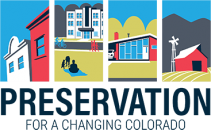This section sets forth a basic framework that can be used to help plan for and implement effective historic preservation programs and projects. Five important steps are identified, along with questions to keep in mind when tailoring an approach to the specific needs and issues related to the historic resource(s) you plan to preserve. Generally, as with any planning process, it is important to first establish the overall vision and desired outcomes. The next step is to identify available tools and select an implementation approach that fits both the goals and the resources available. Finally, it is important not just to plan for implementation, but also to track progress over time.
Set Goals and Objectives
Given the wide variety of preservation tools available, a first step in any approach for pursuing the economic and public benefits provided by historic preservation is to identify what you are trying to achieve. Questions that should be asked include:
-
What are we trying to accomplish? Understanding what you are trying to achieve is an essential first step in developing an effective historic preservation project. For communities, is the preservation project intended to achieve citywide goals, or aimed more at preserving a particular neighborhood, group of resources, or individual property? Is your community interested in promoting heritage tourism? Economic development? Both? For individuals, potential goals may include revitalizing a particular historic building or neighborhood, preserving and celebrating a unique aspect of a community’s heritage, generating long-term income, providing a home for a business or service, or recouping/growing your financial investment. Answering these sorts of questions and prioritizing goals and objectives can be a helpful first step.
-
What community-wide goals will this project help achieve? Linking a project to community-wide goals can help make the case for why a historic preservation project will benefit the larger community. For example, demonstrating the connections between historic preservation and economic development and tourism may help strengthen local support for a historic preservation project, and provide a starting point for identifying potential collaborators.
Assess Existing Programs and Resources
Once goals and objectives are defined, it is important to examine any existing preservation programs and resources available to you before developing new approaches or strategies. For example, what existing funding sources or financial incentives are already available for preservation projects in your community? What programs exist that can help support grant-writing efforts or provide technical advice? Many communities may have untapped resources available through potential partners like the planning or economic development office that can help with historic preservation. A good starting point is the list of available “Resources” in the following section of this report. Questions that should be asked include:
-
What preservation-specific programs are already in place? Looking at the programs already in place (if any) can be a useful exercise for local governments, non-profit groups, and individuals alike. Examples include Colorado Main Street, which offers a proven set of tools for small town economic development, with a focus on preservation; the Endangered Places Program, administered by Colorado Preservation, Inc., which identifies and promotes strategies to assist threatened historic resources; and Historic Denver’s Sacred Landmarks program, which supports the preservation of historic religious properties. Also, a range of programs is available specifically for individual property owners, such as the façade improvement grant program in Brush.
-
What other resources may already be available? Beyond programs dedicated specifically to historic preservation, a range of other resources may be available to assist in new preservation efforts. For example, the Colorado Department of Public Health and Environment administers a Brownfields program that awards grants for assessment, cleanup, and redevelopment of brownfield properties, or properties that have industrial and/or environmental waste issues and often include historic resources.
- What challenges do we face? Each preservation project is different and faces unique challenges. Identifying and understanding those challenges—such as limited funding or staff capacity, site condition or contamination, lack of public understanding of preservation’s benefits—can help to inform the possible approaches needed to start (or bolster) a preservation project. In addition, taking stock of unsuccessful attempts to utilize certain tools or strategies can provide lessons learned on what might work better in the future.

Choose Appropriate Tools and Strategies
Once goals and objectives are set and available resources and programs evaluated, the next step is to choose specific tools and strategies for moving forward. Smart questions include:
-
What tools or strategies should we pursue? In seeking to capitalize on the benefits of preservation, a range of tools and strategies should be considered and their pros and cons evaluated. This report, for example, looks at programs such as preservation tax credits and grants, Main Street, heritage tourism, and local historic district designation; all (or some) of these approaches might be appropriate given factors such as available funding, staff resources, and political support. When selecting potential approaches, prioritizing is helpful, since it may not be possible or feasible to implement a wide range of tools immediately. Implementing the most promising tools first allows time to evaluate their effectiveness. The success of immediate efforts may mean that additional approaches (and additional money, staff time, and other resources) may not be necessary or prudent.
-
What can we learn from others? Reaching out to other communities, organizations, and individuals—either those facing similar challenges, or those that are similar in size, mission, or location—can be helpful when evaluating the effectiveness and challenges of a particular preservation approach. The lessons learned by others can help your project avoid unintended consequences, improve efficiency, and take full advantage of available resources. Furthermore, when discussing your project with potential partners or funders, it is always helpful to be able to point to other efforts that have successfully demonstrated the benefits of preservation to residents, property owners, and elected officials.
-
Do we have the necessary capacity? A successful preservation project must be supported by adequate funding, staff capacity, technical assistance, and other relevant resources. However, this does not mean that projects that lack one or more of these elements should be immediately abandoned. Approaches that appear to be infeasible at present may become possible as staffing situations change, new partnerships emerge, or new grant funding or incentive programs become available. In addition, identifying potential approaches or strategies now can help local governments, non-profits, and property owners plan for future investment.
-
Is there support from the community and elected leaders? In some cases, the decision to pursue a preservation-related project may rely on the support of elected or appointed officials and the general public. For example, funding a façade improvement project could require support from the local planning board or preservation commission. It is important to include local officials and community members early and often when developing a preservation project so that they can provide input and direction on what actions they are comfortable supporting. Providing local residents and elected officials with information on historic preservation, its benefits, and the particular approach or strategy being considered early on can help avoid unexpected outcomes down the road. Buy-in from the community is essential to the success of any preservation project and can help convince elected officials that certain strategies are appropriate for their community.

Track Progress and Measure Success
Tracking and measuring success is essential. This allows stakeholders to promote the effort and the benefits it brings to a community, as well as identify challenges encountered. This requires some thought, as it is not always easy or possible to measure all of the different benefits and positive impacts of historic preservation. This report and the accompanying technical report provide some guidance on how to measure the most common economic benefits from historic preservation, but other benefits may be unique to your project and should be identified and measured if possible.
-
How will we know we are making progress? Developing a set of indicators or metrics to measure the success of a particular program or project can help evaluate if the approach is effective. Collecting this data can also show the impact of a program over time, and provide a powerful argument for why it is important to continue into the future. Success does not necessarily look the same in every community, so it is important to develop a set of metrics or measurements that resonate with the community, elected officials, and other stakeholders.
-
What data do we need? Measuring progress is not always easy, as not all benefits and impacts are easy to quantify and measure. It can be a good idea to start with metrics for which data will be reliably collected and made available from other sources. For example, measuring the success of a heritage tourism project could involve tracking visitation at historic sites (like museums), number of jobs and revenue collected by those institutions, and traffic counts on local roadways. Keep in mind that the most worthwhile data may not be available in all circumstances and you may need to develop your own system of data collection, starting with a baseline set of new data and then developing a plan for regular updates.
-
How do we share our successes? Information on the effectiveness of a historic preservation program or project should be shared with the community at large, and particularly with elected officials, to demonstrate that the efforts made in pursuing historic preservation are worthwhile and should be supported and encouraged. The method for sharing results can vary, from blogs, websites, press releases, celebrations, and events, to community meetings and discussions with local government officials.
-
How do we learn from our setbacks? You may find that a program is not performing as expected or a project has not yet met its anticipated goals. Conditions in the community or wider region may have changed since the effort was first initiated, requiring a change in strategy, or unforeseen circumstances may be slowing progress. Thoughtful consideration of the factors hindering your success can help identify adjustments that may be needed, including seeking new partners or technical advice, or locating additional financial resources. Consistent tracking and regular evaluation of your project or program can help identify and address small issues before they become costly concerns.

